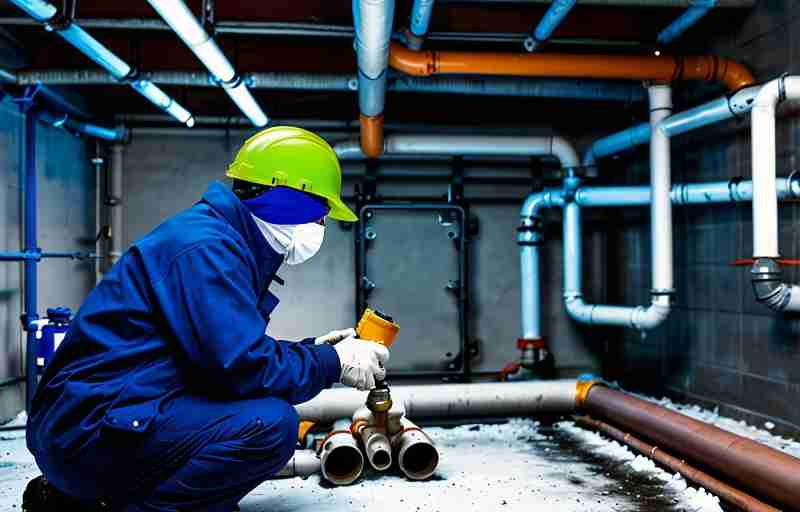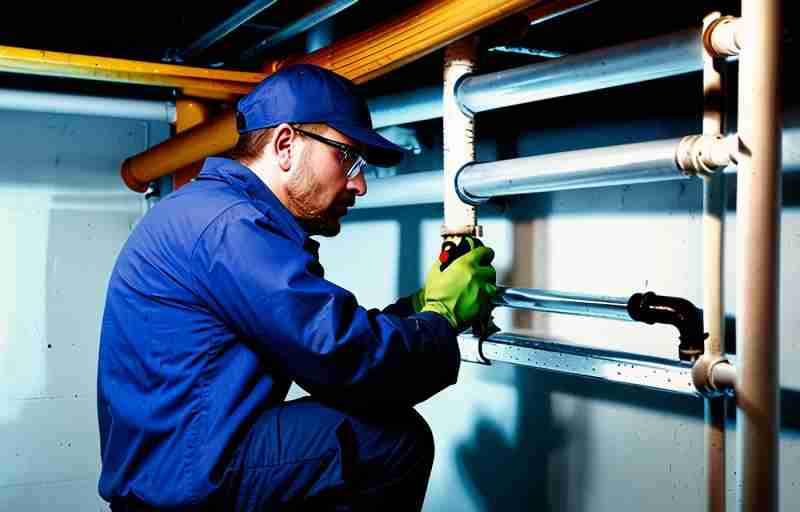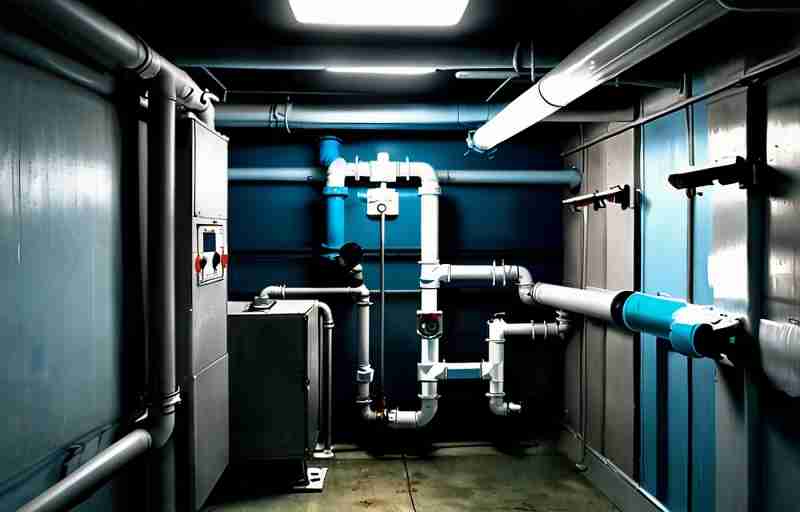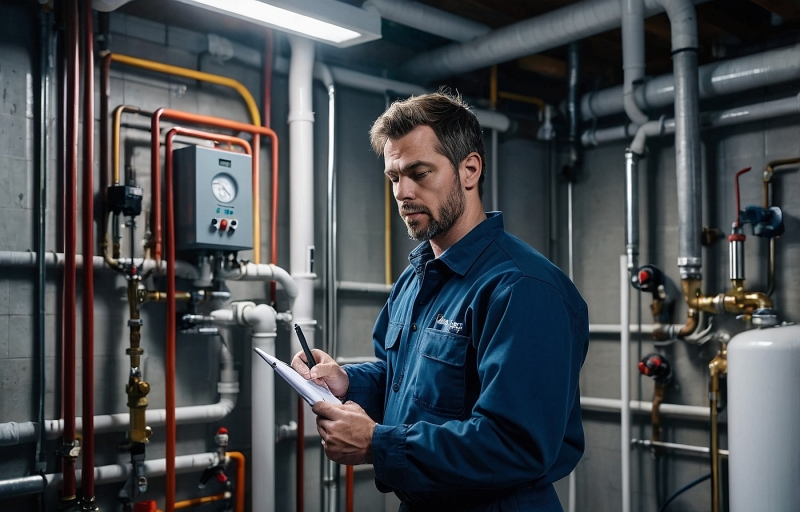Frozen pipes are a common winter woe that can lead to serious water damage if not addressed promptly. When temperatures drop, the water inside your pipes can freeze, expand, and eventually cause the pipes to burst—resulting in costly repairs and potential damage to your home or business. Learning how to prevent water damage from frozen pipes is essential for protecting your property during the colder months. At COMMITTED TO QUALITY SERVICE, we understand the urgency of such situations. That’s why we offer fast, friendly, and professional water damage restoration services, using specialized equipment designed to dry and restore structures affected by severe water damage. Whether you’re dealing with frozen pipes, water leaks, or emergency flooding, our expert team is here to help. Don’t wait until it’s too late—call us now at 855-933-7935 to safeguard your home and avoid the stress of unexpected repairs.
Understand Why Pipes Freeze

Frozen pipes are a common winter hazard that can lead to significant water damage if not properly addressed. When temperatures drop below 32°F (0°C), the water inside pipes can freeze, expand, and create pressure that causes the pipe to burst. This is especially common in uninsulated or exposed pipes in basements, attics, and exterior walls.
“According to the Insurance Institute for Business & Home Safety, a burst pipe can release up to 250 gallons of water per day, causing extensive damage to property and belongings.”
Understanding the science behind frozen pipes helps in taking proactive steps to prevent them. Water expands as it freezes, and since pipes are rigid, this expansion creates immense pressure. The weakest point in the pipe—often a joint or crack—will give way, leading to leaks or bursts.
- Pipes located in unheated interior spaces like garages, crawl spaces, and basements are most at risk.
- Sudden temperature drops, poor insulation, and thermostats set too low can increase the likelihood of freezing.
- Homes in warmer climates are often more vulnerable because pipes are not typically insulated against cold weather.
To learn more about how to protect your home, visit our services page or explore our detailed guide on hidden water damage.
For additional tips and expert advice, check out this helpful resource from the American Red Cross: Preventing and Thawing Frozen Pipes.
Understanding the causes of frozen pipes is the first step in preventing costly water damage and ensuring your home stays safe during the winter months.
Insulate Pipes in Vulnerable Areas

One of the most effective ways to prevent water damage from frozen pipes is by properly insulating pipes located in vulnerable areas. These areas typically include basements, attics, crawl spaces, garages, and exterior walls—places where temperatures can drop significantly during winter. Insulating these pipes helps maintain a stable temperature, reducing the risk of freezing and subsequent bursting.
There are various types of pipe insulation available, such as foam rubber sleeves, fiberglass wraps, and heat tape. Choosing the right insulation depends on your specific needs and the climate in your region. For added protection, consider sealing any gaps or cracks in walls and around pipe entry points to prevent cold air from reaching the pipes.
Homeowners should also pay attention to older plumbing systems, as they may be more susceptible to freezing. Regular maintenance and inspection can help identify potential risks before they become costly problems. If you’re unsure about the best approach, consulting a professional can ensure your home is properly protected.
For more information on how to safeguard your property, visit our services page. You can also explore our blog for expert tips and seasonal advice. Taking proactive steps now can save you from extensive water damage repairs later.
Keep a Consistent Indoor Temperature

Maintaining a stable indoor temperature is one of the most effective ways to prevent your pipes from freezing and bursting during cold weather. Sudden drops in temperature can cause the water inside your pipes to freeze, expand, and eventually crack the pipe, leading to costly water damage. To avoid this, keep your thermostat set to a consistent temperature—ideally above 55°F—even when you’re away from home. This ensures that warm air continues to circulate throughout your home, especially in areas where pipes are located, such as basements, attics, and under sinks.
Proper insulation also plays a critical role in maintaining indoor warmth. Insulate exposed pipes and seal any drafts near windows, doors, or vents. Additionally, opening cabinet doors in kitchens and bathrooms allows warm air to reach pipes more easily. If you’re unsure about your home’s insulation or heating system, consider consulting a professional for an inspection.
For more tips on protecting your property from seasonal damage, visit our blog or explore our full range of services. Taking proactive steps now can save you from expensive repairs and the inconvenience of dealing with water damage later. Don’t wait until it’s too late—ensure your home stays warm and your pipes stay safe all winter long.
Let Faucets Drip During Extreme Cold
During periods of extreme cold, one of the simplest yet most effective ways to prevent frozen pipes is to allow your faucets to drip slightly. This small, continuous flow of water helps relieve pressure in the plumbing system, reducing the risk of pipes freezing and bursting. When water freezes, it expands, which can cause pipes to crack or rupture, leading to significant water damage. By keeping the water moving, even at a trickle, you can avoid the costly repairs and restoration that often follow a pipe burst.
Focus on faucets connected to pipes that run along exterior walls or in unheated areas like basements, attics, and garages. These are the most vulnerable to freezing temperatures. Additionally, open cabinet doors under sinks to allow warm air to circulate around the plumbing.
If you’re unsure whether your home is at risk or if you’ve already experienced issues, it’s wise to consult professionals. Learn more about our comprehensive services designed to protect your property from water-related damage. You can also explore our expert tips on identifying hidden water damage before it becomes a major problem.
Taking proactive steps during cold weather can save you from the stress and expense of emergency repairs. Don’t wait until it’s too late—prepare your home now to stay safe and dry all winter long.
Seal Cracks and Openings Around Pipes
One of the most effective ways to prevent water damage from frozen pipes is by sealing any cracks or openings around pipes, especially where they enter your home. These gaps can allow cold air to seep in, increasing the risk of pipes freezing and bursting during winter. Use caulk or spray foam insulation to seal these vulnerable areas, particularly in basements, crawl spaces, attics, and exterior walls. This simple step can significantly reduce the chances of costly water damage.
In addition to sealing gaps, consider insulating exposed pipes with foam pipe insulation or heat tape. This is especially important for pipes located in unheated areas. Regularly inspecting your home for any signs of wear or damage around pipe entry points can help you catch potential issues early. If you’re unsure where to start, our services page offers detailed information on professional solutions for protecting your home.
Water damage from frozen pipes can lead to mold growth, structural issues, and expensive repairs. To learn more about the risks and how to address them, visit our water damage resource page. Taking proactive steps now can save you time, money, and stress in the long run. For personalized advice or assistance, don’t hesitate to reach out to our expert team.
Disconnect and Drain Outdoor Hoses
One of the most overlooked yet crucial steps in preventing water damage from frozen pipes is properly managing your outdoor water sources before winter sets in. Outdoor hoses left connected to faucets can trap water inside the pipe, which may freeze, expand, and cause the pipe to burst. This can lead to extensive water damage not only outside but also inside your home’s walls and foundation.
To avoid this, start by disconnecting all garden hoses from outdoor spigots. Drain any remaining water from the hoses and store them in a dry place. Next, shut off the water supply to outdoor faucets if your home has a separate valve for them. After turning off the supply, open the faucet to allow any residual water to drain out completely. For added protection, consider installing insulated faucet covers to shield them from freezing temperatures.
Taking these simple precautions can save you from costly repairs and potential water damage restoration services. If you’re unsure about your home’s winter readiness, consult our expert team for professional guidance. Learn more about our full range of services designed to protect your property year-round. For additional tips and insights, visit our blog and stay informed on how to keep your home safe during the colder months.
Know How to Shut Off Your Water Supply
In the event of frozen pipes, knowing how to shut off your water supply can be the difference between a minor inconvenience and a major disaster. When water inside pipes freezes, it expands and increases pressure, which can cause pipes to burst. If this happens, shutting off the main water supply immediately can help prevent extensive water damage to your home.
The main water shut-off valve is typically located near where the water line enters your home—often in basements, crawl spaces, or utility rooms. It’s crucial to locate this valve in advance and ensure it’s accessible and functional. Everyone in your household should know its location and how to operate it in case of an emergency.
In addition to turning off the main valve, consider draining your pipes by opening faucets and flushing toilets to remove any remaining water. This step can further reduce the risk of damage if a pipe bursts.
Understanding how to act quickly during a plumbing emergency is part of a broader strategy to protect your home. For more tips on preventing and managing water-related issues, explore our blog or learn more about our comprehensive services. If you suspect damage has already occurred, visit our water damage page to find out how we can help restore your property efficiently and effectively.
In conclusion, preventing water damage from frozen pipes is all about preparation and vigilance. By insulating your pipes, maintaining a consistent indoor temperature, sealing leaks, and allowing faucets to drip during extreme cold, you can significantly reduce the risk of freezing. Regular maintenance and awareness of your plumbing system are key to avoiding costly repairs and water damage. Taking these proactive steps not only protects your home during the winter months but also provides peace of mind knowing that you’re ready for whatever the cold weather brings. Stay warm, stay safe, and keep your pipes flowing freely.

